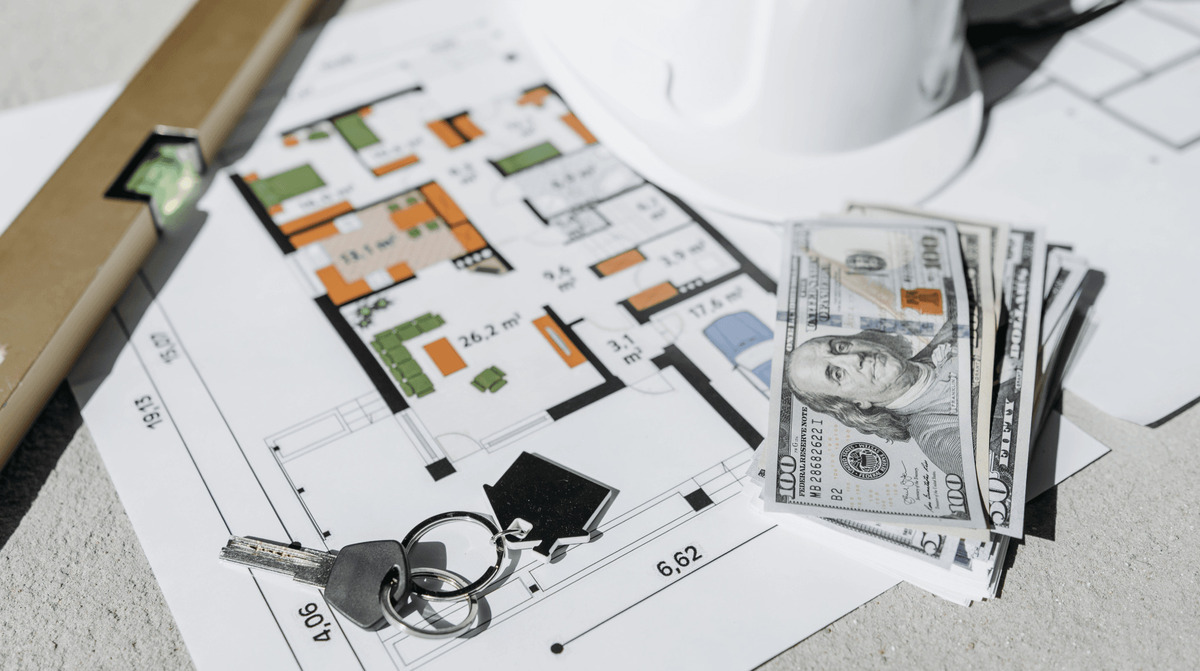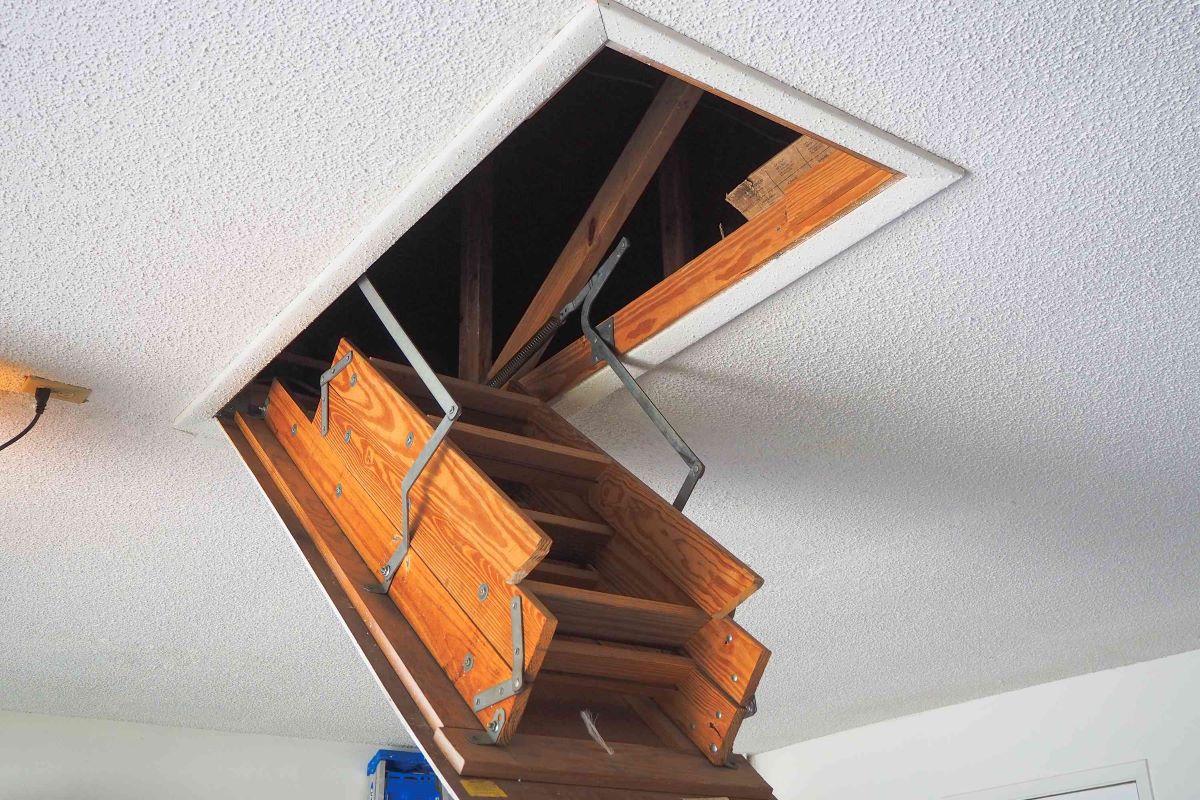Home>diy>Building & Construction>How To Close NCR In Construction


Building & Construction
How To Close NCR In Construction
Modified: January 9, 2024
Learn how to efficiently close non-conformance reports (NCR) in the field of building construction. Follow our step-by-step guide for seamless NCR resolution.
(Many of the links in this article redirect to a specific reviewed product. Your purchase of these products through affiliate links helps to generate commission for Storables.com, at no extra cost. Learn more)
Introduction
Welcome to the world of construction, where attention to detail and adherence to quality standards are of utmost importance. In the construction industry, ensuring that all work meets the required specifications and standards is essential to deliver safe and durable structures. However, there are instances when non-conformances occur during the construction process, leading to the generation of Non-Conformance Reports (NCRs).
An NCR is a document that highlights any deviation from the approved plans, specifications, or quality standards. It serves as a record of non-compliance that needs to be addressed and resolved promptly to ensure the construction project stays on track and meets the predetermined guidelines. Closing NCRs is a crucial step in construction, as it signifies the successful resolution of non-conformities and the restoration of compliance.
In this article, we will delve into the process of closing NCRs in construction projects. We will explore the importance of closing NCRs, understand the steps involved, and provide valuable insights into each stage. So, if you’re ready, let’s begin our journey to mastering the art of closing NCRs in construction.
Key Takeaways:
- Closing NCRs in construction is crucial for maintaining compliance, quality, and client satisfaction. It involves a systematic approach, from identifying root causes to implementing corrective actions and verifying their effectiveness.
- Effective closure of NCRs requires collaboration, communication, and continuous improvement. It signifies the successful resolution of non-conformances, upholding quality standards, and mitigating risks in construction projects.
Read more: What Is An NCR In Construction
Understanding NCR in Construction
Before we dive into the process of closing NCRs, let’s first gain a clear understanding of what NCRs are and why they occur in construction projects. NCR stands for Non-Conformance Report, and it is a documented record of any failure to meet the construction project’s specified requirements or quality standards.
There are various reasons why NCRs may arise in construction projects. Some common causes include design errors, material defects, construction methods not conforming to specifications, non-compliance with safety regulations, and poor workmanship. It is essential to identify and address NCRs promptly to maintain the project’s integrity, ensure safety, and meet client expectations.
NCRs can be identified through various means, such as inspections, quality control processes, site audits, or client complaints. Once an NCR is identified, it should be adequately documented, including details of the non-conformance, location, date, the parties involved, and any relevant supporting information.
It’s important to note that NCRs are not meant to assign blame or point fingers, but rather to address and resolve the non-conforming issues. By effectively managing NCRs, construction companies can improve their processes, enhance quality control, and prevent similar non-conformances in future projects. Now that we have a grasp on what NCRs are and why they occur, let’s explore the importance of properly closing these reports in the construction industry.
Importance of Closing NCRs
Closing NCRs in construction projects is a critical step in maintaining quality, ensuring compliance, and upholding the reputation of construction companies. Let’s take a closer look at the importance of closing NCRs:
- Ensuring Compliance: Closing NCRs ensures that any non-conformances identified during the construction process are addressed and resolved. This ensures that the project meets the required specifications, standards, and regulatory requirements. Compliance is essential to maintain the safety and integrity of the structure.
- Quality Control: Closing NCRs is an integral part of quality control in construction. By identifying and addressing non-conformances, construction companies can improve their processes, rectify errors, and prevent future occurrences. It helps in maintaining a high level of quality throughout the construction project.
- Risk Mitigation: NCRs often highlight potential risks and areas of concern. By promptly closing NCRs, construction companies can mitigate these risks and prevent any further complications or delays. It helps in identifying and addressing issues before they potentially escalate into more significant problems.
- Client Satisfaction: Closing NCRs is crucial for client satisfaction. Clients expect their construction projects to be delivered according to the agreed specifications and standards. By actively addressing and resolving NCRs, construction companies demonstrate their commitment to delivering a high-quality product, satisfying their clients’ needs, and ensuring their trust and satisfaction.
- Continuous Improvement: Closing NCRs provides an opportunity for continuous improvement. By analyzing the root causes of non-conformances and implementing corrective actions, construction companies can enhance their processes, increase efficiency, and prevent similar issues in future projects. It helps in fostering a culture of learning and improvement within the organization.
- Legal and Financial Implications: Failure to address and close NCRs can have legal and financial consequences. Non-compliance with regulations or standards can result in regulatory penalties, legal disputes, and financial losses. By closing NCRs, construction companies mitigate these risks and protect their reputation and financial well-being.
In summary, closing NCRs is vital for maintaining compliance, ensuring quality, mitigating risks, satisfying clients, fostering continuous improvement, and avoiding legal and financial implications. It is an integral part of the construction process that should not be overlooked or taken lightly. Now that we understand the significance of closing NCRs, let’s explore the steps involved in effectively closing these reports in construction projects.
Steps to Close NCRs in Construction
Closing NCRs in construction projects involves a systematic approach to identify, address, and resolve non-conformances. Let’s explore the steps involved in effectively closing NCRs:
- Reviewing the Non-Conformance Report: The first step is to thoroughly review the NCR, including the details of the non-conformance, supporting documentation, and any relevant information. Understanding the nature and extent of the non-conformance is crucial for developing an appropriate action plan.
- Identifying the Root Cause: Next, it is essential to identify the root cause of the non-conformance. This involves conducting an investigation to determine the underlying reason for the deviation from the required specifications or standards. Identifying the root cause helps in developing effective corrective actions to prevent future occurrences.
- Creating an Action Plan: Based on the identified root cause, a comprehensive action plan should be developed. This plan should outline the specific steps and strategies to address and resolve the non-conformance. It should include a timeline, responsible parties, required resources, and any necessary approvals.
- Implementing Corrective Actions: Once the action plan is in place, it’s time to implement the corrective actions. This may involve rework, repairs, adjustments, or any other necessary measures to rectify the non-conformance. It is essential to ensure that the corrective actions are carried out effectively and in accordance with the approved plan.
- Verification and Documentation: After implementing the corrective actions, it is crucial to verify their effectiveness. This may involve conducting inspections, tests, or other quality control measures to ensure that the non-conformance has been resolved and that the project now meets the required specifications and standards. Documentation should be maintained throughout this process for record-keeping purposes.
- Closing the NCR: Once the corrective actions have been successfully implemented and verified, the NCR can be officially closed. This signifies that the non-conformance has been addressed and resolved, and the project is back on track. The closure of the NCR should be communicated to all relevant stakeholders and documented for future reference.
It’s important to note that the effective closure of an NCR requires collaboration, communication, and coordination among all parties involved, including project managers, site supervisors, contractors, and quality control personnel. By following these steps, construction companies can ensure the efficient and successful closure of NCRs, leading to improved quality, compliance, and client satisfaction.
Reviewing the Non-Conformance Report
The first step in closing an NCR in a construction project is to thoroughly review the Non-Conformance Report (NCR) itself. The NCR provides detailed information about the specific non-conformance, including the nature of the deviation from the required specifications or standards, the location where it occurred, the date it was identified, and any supporting documentation.
When reviewing the NCR, it is important to carefully analyze the information provided. This includes examining the description of the non-conformance, any photographs or sketches included as evidence, and any test results or inspection reports related to the issue. The goal is to gain a clear understanding of the non-conformance and its potential impact on the overall project.
During the review, it is also important to identify any relevant parties involved in the non-conformance, such as the individuals responsible for the work, supervisors, contractors, or materials suppliers. This information will be useful later in the process when assigning responsibility or determining corrective actions.
Additionally, the review should include an examination of any previous NCRs or similar non-conformances that have been reported in the project. This can help identify any recurring issues or patterns that need to be addressed to prevent future non-conformances.
By thoroughly reviewing the NCR, construction professionals can gain a complete understanding of the non-conformance, its significance, and the specific areas that need to be addressed. This information will serve as a foundation for the subsequent steps in the process of closing the NCR.
Read more: When Do You Close On A Construction Loan
Identifying the Root Cause
Once the Non-Conformance Report (NCR) has been thoroughly reviewed, the next step in closing an NCR in a construction project is to identify the root cause of the non-conformance. Identifying the root cause involves conducting a thorough investigation to determine the underlying reason or factors that contributed to the deviation from the required specifications or standards.
Identifying the root cause is crucial because it allows construction professionals to address the fundamental issue instead of merely treating the symptoms. By understanding the root cause, the necessary corrective actions can be implemented effectively, preventing similar non-conformances from occurring in the future.
The process of identifying the root cause typically involves the following steps:
- Gather Information: Collect all available data related to the non-conformance, including documentation, records, and any relevant witnesses or personnel involved. This information can provide valuable insights into the factors contributing to the non-conformance.
- Analyze the Data: Review and analyze the gathered information to identify any common patterns or trends. Look for any specific conditions, processes, or actions that may have contributed to the non-conformance. Use various analytical techniques, such as fishbone diagrams, 5 Whys, or cause-and-effect diagrams, to systematically analyze the data and find potential root causes.
- Investigate the Causes: Conduct a detailed investigation to validate the identified potential root causes. This may involve interviewing relevant personnel, conducting site inspections, or reviewing additional documentation. The goal is to gather more evidence and gain a deeper understanding of the factors responsible for the non-conformance.
- Determine the Root Cause: Based on the gathered information and investigation, determine the most likely root cause or causes of the non-conformance. It is essential to focus on the underlying systemic issues rather than individual mistakes or isolated incidents.
Identifying the root cause of an NCR requires a systematic and objective approach. It is important to involve all relevant parties, such as project managers, site supervisors, and quality control personnel, to gather different perspectives and expertise. By accurately identifying the root cause, construction professionals can implement appropriate corrective actions and prevent similar non-conformances from reoccurring.
When closing NCRs in construction, ensure all corrective actions are completed and documented. Provide evidence of resolution and involve all relevant stakeholders in the closure process.
Creating an Action Plan
Once the root cause of the Non-Conformance Report (NCR) has been identified, the next step in closing an NCR in a construction project is to create an action plan. The action plan serves as a roadmap for addressing and resolving the non-conformance, ensuring that the necessary steps are taken to rectify the issue and prevent its recurrence.
Creating an action plan involves developing a comprehensive strategy that outlines the specific actions, timelines, responsibilities, and resources required to address the root cause of the non-conformance. The following steps can guide the creation of an effective action plan:
- Define Objectives: Clearly define the objectives of the action plan based on the identified root cause. The objectives should be specific, measurable, attainable, relevant, and time-bound (SMART). This ensures that the goals of the action plan are clearly defined and can be effectively executed.
- Break Down the Tasks: Identify the specific tasks required to address the root cause. Break them down into smaller, manageable steps to ensure clarity and ease of implementation. Assign responsibilities for each task to the appropriate individuals or teams involved in the project.
- Set Timelines: Establish realistic timelines for each task to ensure prompt action. Consider the urgency of the non-conformance, the availability of resources, and any potential dependencies on other tasks or project milestones. Timelines should be achievable and allow for sufficient time to complete the required actions effectively.
- Allocate Resources: Determine the resources, both human and material, needed to execute the action plan. This includes identifying the necessary skills, tools, equipment, and any additional support required. Ensure that the allocated resources are readily available and appropriately allocated for a smooth implementation process.
- Communicate and Coordinate: Clearly communicate the action plan to all relevant stakeholders, including project managers, site supervisors, contractors, and quality control personnel. Ensure that all parties involved understand their responsibilities and are aligned with the objectives and timelines of the action plan. Foster open communication and coordination to facilitate the successful execution of the plan.
- Seek Approvals if Needed: Depending on the nature and extent of the non-conformance, certain actions or changes may require approvals from clients, regulatory authorities, or other external entities. Identify any required approvals and ensure that the necessary documentation and processes are in place to obtain them.
Creating an action plan provides a structured approach to addressing non-conformances in construction projects. It ensures that all necessary steps are planned and executed, leading to the effective resolution of the non-conformance. By following the action plan, construction professionals can progress towards the ultimate goal of closing the NCR and ensuring compliance with the required specifications and standards.
Implementing Corrective Actions
Once the action plan has been created, the next crucial step in closing a Non-Conformance Report (NCR) in a construction project is to implement the corrective actions. Implementing corrective actions involves executing the tasks and strategies outlined in the action plan to address the root cause of the non-conformance and rectify the issue at hand.
Implementing corrective actions requires careful coordination, allocation of resources, and adherence to the established timelines. The following steps can guide the effective implementation of corrective actions:
- Assign Responsibilities: Clearly assign responsibilities for each task within the action plan. Identify the individuals or teams who will be responsible for carrying out the necessary actions. Ensure that each party understands their role and the specific tasks they need to accomplish.
- Provide Clear Instructions: Clearly communicate the instructions and procedures for executing the corrective actions. Provide detailed guidance on how each task should be performed, including any specific requirements or considerations. This ensures that everyone involved has a clear understanding of what needs to be done.
- Allocate Resources: Ensure that the necessary resources, such as materials, equipment, and personnel, are allocated and readily available to carry out the corrective actions. Provide the required tools and support to enable efficient and effective implementation.
- Monitor Progress: Regularly monitor and track the progress of the corrective actions being implemented. This includes conducting site visits, inspections, or quality control checks to ensure that the actions are being executed correctly and in accordance with the established guidelines.
- Address Challenges: Identify and address any challenges or obstacles that arise during the implementation process. This may include unforeseen issues, resource constraints, or changes in project circumstances. Adjust the action plan if necessary and provide the support needed to overcome any hurdles.
- Document Actions Taken: Maintain detailed records of the corrective actions taken, including any changes made, repairs, adjustments, or additional measures implemented. Documenting the actions provides a clear record of the steps taken to address the non-conformance and demonstrates compliance with the established plan.
Implementing corrective actions requires a collaborative effort among all relevant parties involved in the construction project. Effective communication, coordination, and ongoing monitoring are critical to ensure that the corrective actions are carried out successfully and in a timely manner. By diligently executing the action plan and implementing the necessary corrective actions, construction professionals can make significant progress towards closing the NCR and restoring compliance.
Verification and Documentation
After implementing the corrective actions to address the non-conformance, the next step in closing a Non-Conformance Report (NCR) in a construction project is to verify their effectiveness and ensure that the project now meets the required specifications and standards. This step involves conducting thorough verification inspections, tests, and documentation processes to validate that the non-conformance has been resolved.
The verification and documentation step is crucial for several reasons:
- Validation of Corrective Actions: The verification process ensures that the corrective actions implemented have effectively addressed the root cause of the non-conformance. It confirms that the appropriate measures have been taken to rectify the issue and bring the construction project back into compliance.
- Quality Assurance: Verification inspections and tests help ensure that the completed work meets the required quality standards. It confirms that the project has been executed in accordance with the approved plans, specifications, and regulatory requirements.
- Preventing Recurrence: The verification process helps identify any potential risks or issues that could lead to similar non-conformances in the future. It enables construction professionals to take proactive measures and make necessary adjustments to prevent the recurrence of the non-conformance.
- Documentation for Compliance: Proper documentation is essential to maintain a record of the actions taken to address the non-conformance. It provides comprehensive documentation of the verification process, including inspection reports, test results, photographs, and any other supporting evidence. This documentation serves as a reference for future audits, regulatory compliance, and client satisfaction.
During the verification and documentation process, construction professionals should follow these steps:
- Inspect Completed Work: Conduct thorough inspections to ensure that the completed work aligns with the approved plans and specifications. This may involve site visits, visual inspections, or specialized testing, depending on the nature of the non-conformance.
- Perform Tests and Analysis: Conduct any necessary tests or analyses to validate that the corrective actions have resolved the non-conformance. This may include structural integrity tests, material strength tests, or any other specialized assessments to verify compliance.
- Document the Verification Process: Maintain detailed documentation of the verification process, including inspection reports, test results, photographs, and any other relevant evidence. This documentation serves as a record of compliance and provides a reference for future audits or client inquiries.
- Obtain Approvals if Required: Depending on the project requirements, seek any necessary approvals or certifications to validate that the non-conformance has been successfully resolved. This may involve obtaining sign-offs from clients, regulatory authorities, or other relevant stakeholders.
Once the verification process is complete and the corrective actions have been confirmed, the project is one step closer to closing the NCR. The documentation collected during this step serves as essential evidence of the successful resolution of the non-conformance and ensures compliance with the required specifications and standards.
Read more: Who Sets Closing Date On New Construction
Closing the NCR
The final step in closing a Non-Conformance Report (NCR) in a construction project is officially closing the NCR. This step signifies that the non-conformance has been successfully addressed, the required corrective actions have been implemented, and the project now meets the specified requirements and standards.
Closing the NCR involves several key actions:
- Final Review: Before closing the NCR, conduct a final review of the entire process. Verify that all steps outlined in the action plan have been completed, and the corrective actions have been successfully implemented. Confirm that the project now complies with the approved plans, specifications, and relevant regulations.
- Communication: Notify all relevant parties about the closure of the NCR. This includes the project team, contractors, quality control personnel, and any other stakeholders who were involved or affected by the non-conformance. Clearly communicate that the non-conformance has been resolved and provide any necessary information or updates regarding the project.
- Documentation: Document the closure of the NCR for record-keeping purposes. This documentation should include a summary of the non-conformance, the identified root cause, the corrective actions taken, and the verification and inspection results. Maintain these records as part of the project documentation for future reference or audits.
- Lessons Learned: Take the opportunity to reflect on the NCR and the entire process of addressing it. Identify any lessons learned, both in terms of areas for improvement and best practices. Use this information to enhance future project planning, quality control measures, and risk mitigation strategies.
- Continuous Improvement: Closing an NCR provides an opportunity for continuous improvement. Share the insights gained from addressing the non-conformance with the project team and relevant stakeholders. Work towards implementing changes and proactive measures to prevent similar non-conformances from occurring in future projects.
By effectively closing the NCR, construction professionals signal the successful resolution of the non-conformance, restore compliance, and uphold quality standards. Proper communication, documentation, and reflection on the lessons learned during this process contribute to continuous improvement and the overall success of future construction projects.
Remember, the closure of an NCR should not be considered as the end of the quality management process. It is important to remain vigilant, continue monitoring the construction project, and maintain a proactive approach to address any new non-conformances that may arise.
Conclusion
Closing Non-Conformance Reports (NCRs) is a crucial process in the construction industry to ensure compliance with specifications, maintain quality standards, and satisfy client expectations. By following a systematic approach to close NCRs, construction professionals can effectively address non-conformances, prevent their recurrence, and enhance overall project outcomes.
We began by understanding what NCRs are and why they occur in construction projects. NCRs serve as records of non-compliance, highlighting deviations from approved plans or quality standards. Their identification and resolution are essential to maintain project integrity and deliver safe and durable structures.
The importance of closing NCRs was emphasized, particularly in terms of ensuring compliance, quality control, risk mitigation, client satisfaction, continuous improvement, and avoiding legal and financial implications. Closing NCRs not only addresses immediate non-conformances but also improves processes and prevents future occurrences.
We then explored the steps involved in closing NCRs. These steps include reviewing the NCR, identifying the root cause, creating an action plan, implementing corrective actions, verifying the effectiveness of those actions, and documenting the entire process. Each step requires careful analysis, coordination, and communication among all stakeholders involved in the construction project.
Finally, we discussed the significance of closing the NCR and the actions involved in officially closing it. This stage includes final reviews, communication with relevant parties, documentation, learning from the experience, and continuous improvement. The closure of an NCR marks the successful resolution of non-conformances and highlights the commitment of construction professionals to maintaining quality and compliance.
In conclusion, closing NCRs in construction projects is a vital aspect of project management and quality control. By diligently following the steps outlined in this article, construction professionals can effectively address non-conformances, enhance project outcomes, and uphold the highest standards of quality, compliance, and client satisfaction.
Frequently Asked Questions about How To Close NCR In Construction
Was this page helpful?
At Storables.com, we guarantee accurate and reliable information. Our content, validated by Expert Board Contributors, is crafted following stringent Editorial Policies. We're committed to providing you with well-researched, expert-backed insights for all your informational needs.














0 thoughts on “How To Close NCR In Construction”